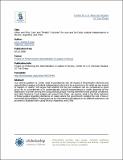| dc.contributor.author |
Andrea Pozas Loyo and Julio Ríos Figueroa |
| dc.coverage.spatial |
United States |
| dc.date.accessioned |
2016-01-07T15:20:38Z |
| dc.date.available |
2016-01-07T15:20:38Z |
| dc.identifier.uri |
http://desa1.cejamericas.org:8080/handle/2015/394 |
| dc.description.abstract |
Our central question is: Under what circumstances can we expect a theoretically informed and reproducible measure of judicial independence de jure to be a good proxy for what we can expect to happen in reality? We argue that whether the de jure measure can be considered a good proxy for, to overestimate or to underestimate, judicial independence in reality depends on the distribution of power among the ruling political groups. Having identified those political conditions, and what Supreme Court judges can expect from them, we explore what is the likely behavior of these judges regarding decisions on cases where the government violates the rule of law or horizontal accountability. Having laid out our theoretical expectations in six different scenarios, we proceed to illustrate them using Mexico Argentina, and Chile. |
| dc.language.iso |
English |
| dc.title |
When and Why “Law” and “Reality” Coincide? De Jure and De Facto Judicial Independence in Mexico, Arg |
| dc.ceja.source |
Fuente: Center for US-Mexican Studies, University of California San Diego |

